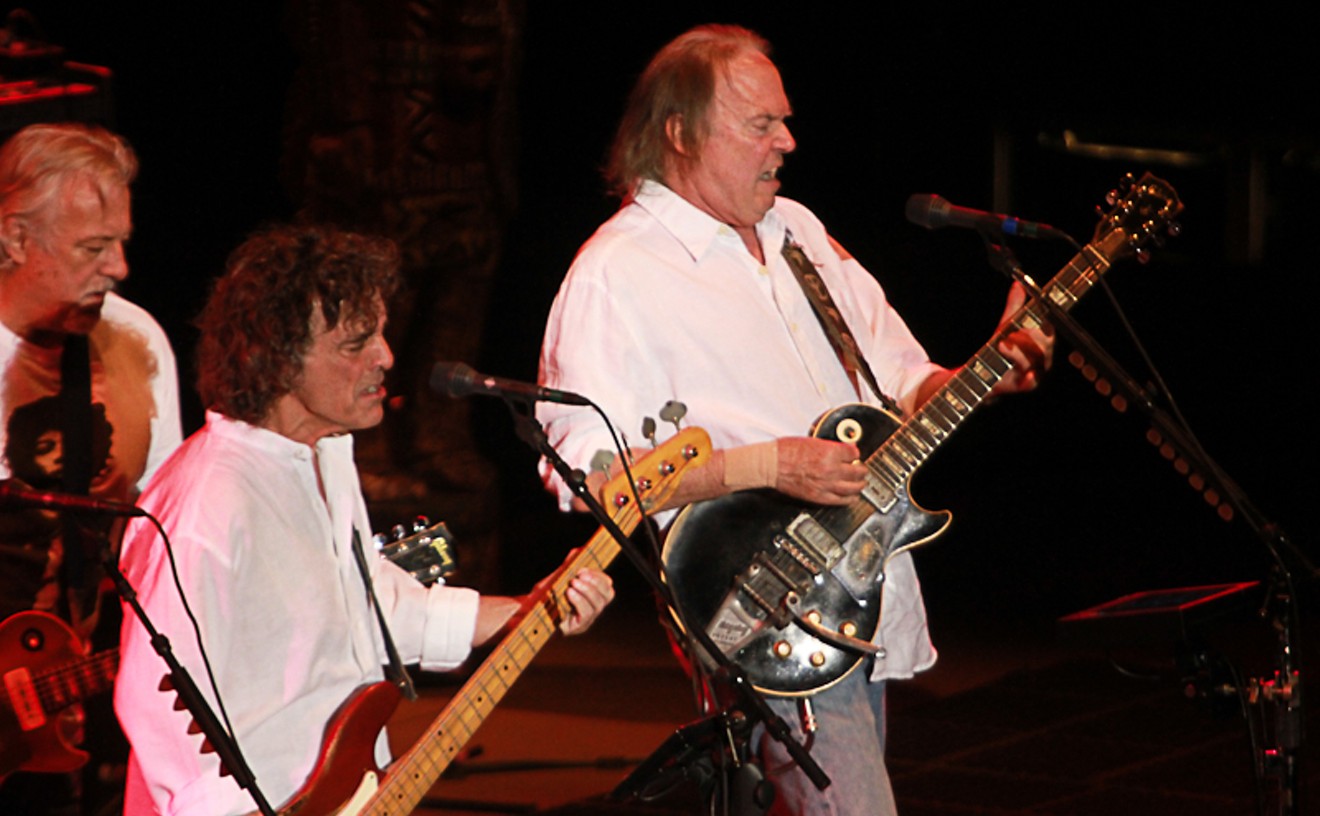This brave new world has a dark side, though, and sometimes bands that aren't quite ready for primetime get launched to a brief moment of undeserved stardom before their celebrity outpaces their output. What's been lost is the idea of artist development -- labels signing young talent and working with them over time, making them pay dues with tours as opening acts, or quietly releasing an album or two before unveiling their masterpiece. Nowadays, if an artist has a hit song, they are ready to headline a tour, even if their catalog is only four or five songs deep (Oh, hi, Foster the People, we didn't see you come in). But what would have happened if blog hype had always been the gatekeeper of success? These five world-changing albums probably never would've been made.
Bruce Springsteen - Born to Run (1975)
Having first appeared on the radar of music critics in the early 1970s with his band Steel Mill, Springsteen earned an audition with Columbia Records' tastemaker John Hammond (who had previously brought Bob Dylan to the label).
America's first real taste of "The Boss" came in the form of Greetings from Asbury Park, N.J., which was released in January 1973. Although it received some critical acclaim (and a Manfred Mann's cover of "Blinded by the Light" would later top the Billboard charts), many listeners dismissed the album as an approximation of styles already mastered by Bob Dylan and Van Morrison.
Despite making a few fans among the circle of East coast rock critics, none of Springsteen's first three records were commercially successful. It wasn't until the release of Born to Run in 1975 that the world caught on to one of great voices of American rock thanks to Columbia Records' patience.
Pink Floyd - Dark Side of the Moon (1973)
The band's name and lineup fluctuated regularly until the mid-1960s, when a group known as the Pink Floyd Sound earned themselves a resident gig at the Countdown Club, playing extended sets that lasted until the wee hours of the morning and winning a place in London's emerging underground music scene.
The band's debut, Piper at the Gates of Dawn, was released in 1967, but its lead single "Arnold Layne" was barred from radio play because of a reference to cross dressing, limiting initial sales. Further hindering the band, who had since dropped "the" and "sound" from their name, was the erratic behavior of guitarist Syd Barrett, prompting the addition of a fifth member, David Gilmour, and lots of gossip.
The band would release four more albums on the powerful EMI label (A Saucerful of Secrets, Ummagumma, Atom Heart Mother and Meddle), none of which earned much commercial success, and one of which was described by Gilmour as "a load of rubbish."
While Meddle earned modest critical praise, the albums themselves didn't make much of an impact, but the studio time allowed the band to develop new sound manipulation and production techniques that would shape the songwriting and recording of 1973's Dark Side of the Moon.
Stevie Wonder - Talking Book (1972)
Although Wonder would become the youngest artist to top the Billboard charts thanks to his 1963 single, "Fingertips Pt. 2", at the age of thirteen, his introduction to Motown records came in 1961, when label owner Berry Gordy inked a deal to secure the talents of Little Stevie Wonder.
Being a musical prodigy who overcame a debilitating physical disability wasn't enough to propel Wonder to fame though. His first single, "I Call It Pretty Music, But the Old People Call It the Blues" in 1961 was only released regionally around Detroit, and his first two albums, The Jazz Soul of Little Stevie and Tribute to Uncle Ray, failed to bring about the commercial success implied by the buzz surrounding the young musician (who was referred to by Motown executives as the eighth wonder of the world, which is where he found his new surname). Not even the novelty of a blind teen could propel the success of the records.
Even after his chart topping success in the mid '60s, and dropping "Little" from his name, Wonder still had to battle Motown for the creative control necessary to release Talking Book, which was a departure from his previous hits.
The Replacements - Let It Be (1984)
Having built a buzz with glowing reviews from fanzines covering Minneapolis' punk scene at the turn of the 1980s, the Replacements went from a three-song demo tape to a debut album in a relatively short span. Stuck somewhere between the thrash of early punk and the emotionally accessible songwriting of Paul Westerberg, the band never quite fit in, a feeling they tried to dull with excessive amounts of alcohol and a friendly rivalry with fellow Twin Cities' act, Husker Du.
But despite the band's buzz, their debut record, a punkier EP, Stink, that followed it and another full-length in 1983 called Hootenanny all failed to deliver a critical and commercial knock out. The band struggled outright, including nearly being kicked out of the legendary CBGB's and then nearly imploding while opening for R.E.M. during an eight-show stint.
When they returned to the studio in the fall of 1983, the band decided to change direction, eschewing a strictly punk format for a style that showcased Westerberg's writing and touched up on influences of heavy metal, blues and more. The end result was Let It Be, which Spin and Rolling Stone both declared one of the strongest albums of the decade.
Marvin Gaye - What's Going On (1971)
While Gaye had secured his success by the late '60s following a few chart-topping singles, this son of a preacher (who once tried to deny him a chance to make secular music) had struggled critically and commercially at the start of the decade. Following stints as a member of the vocal group, the Moonglows, and as a session drummer, Gaye caught the attention of Motown Records owner, Berry Gordy, and was granted a place on its subsidiary label, Tamla.
His first single in 1961 was a total flop. So was his debut album, The Soulful Moods of Marvin Gaye. He actually had more success playing drums on records for the Supremes, among others. Years later, his luck began to change, and he scored several major hits, including popular duets with singer Tammi Terrell.
Because of Gaye's success, Gordy was opposed to the idea of him releasing a politically-themed record, but the album went on to sell more than a million copies without breaking a sweat, marking Gaye's first success crossing over to white rock markets without sacrificing his predominantly black fanbase. In addition to the eponymous hit, the album also charted "Mercy Mercy Me" and "Inner City Blues," setting the tone for fusion of funk, jazz and blues that would define R&B during the politically tumultuous early part of the '70s (until disco took over). If bloggers had chewed up and spit out his first record, the world would've never understood the power of "Sexual Healing" more than twenty years later.










